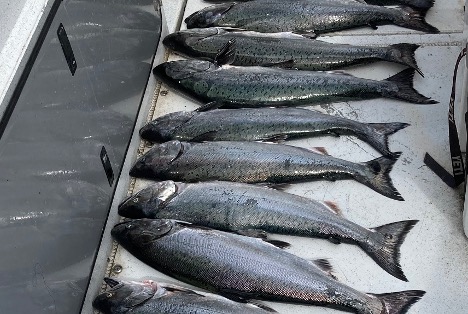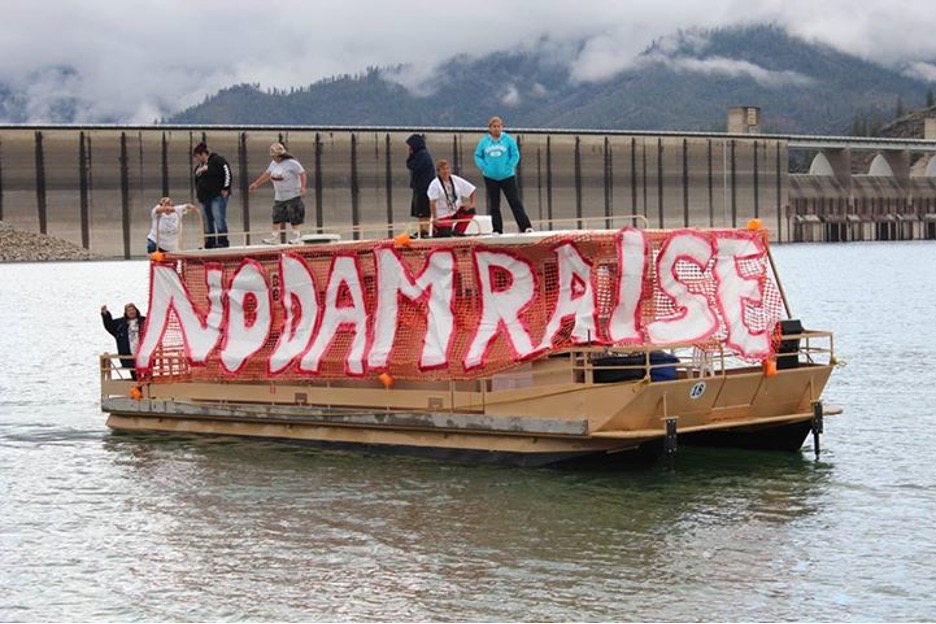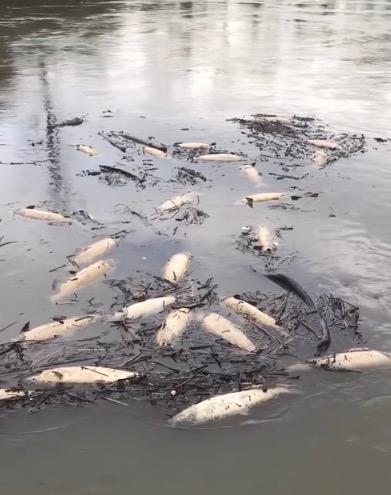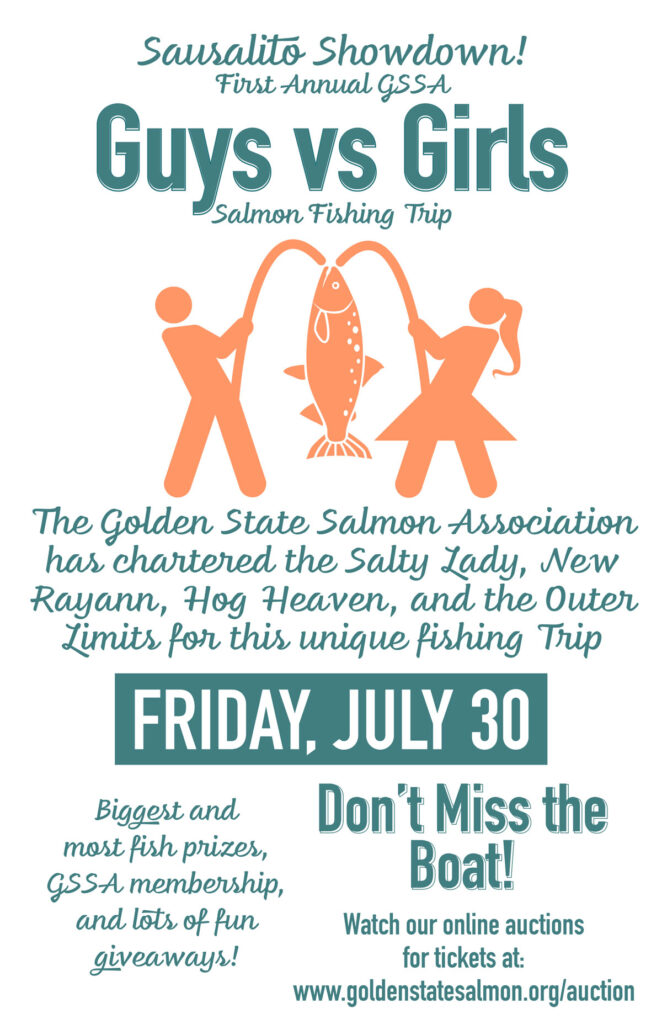Season update

There has been spotty fishing below Pigeon Point in both the sport and commercial fisheries so far this year. Fishing has been limited by high winds and the long-distance runs to get to some of the best spots in open waters. Then you have to figure out where, in that big ocean, the fish are. Having said that, there have been several good days when lots of fish bit lots of hooks, showing that they’re there. This includes spots in and around Monterey Bay. Both sport and commercial boats have reported large numbers of small fish below Pigeon Point, suggesting we should have something to fish on next year. In addition, a fairly large school of salmon was spotted off Eureka recently by a charter boat out after halibut.
The second opening of the commercial season closed on May 27 and won’t reopen until June 16, at which time it will be open from Pt. Arena south to the Mexican border. Sportfishing will continue below Pigeon Point and open above, to Pt. Arena, on June 26.
CDFW continues trucking hatchery fish to west Bay release sites

The California Dept of Fish and Wildlife (CDFW) is continuing the trucking all of its hatchery baby salmon to release sites in SF Bay. Millions of fish are being moved. This is being done to minimize drought-related losses and follows months of requests by GSSA urging the state to act. The US Fish and Wildlife Service also trucked roughly 900,000 baby salmon from the Coleman Hatchery near Redding to the west Bay.
The trucking should produce a large number of 20” jacks by next year and a potentially good season in 2023. This will be especially valuable considering water temperature modeling is now showing that temperatures will likely be lethal for natural spawning salmon by late summer and into the fall.
Also, following GSSA’s request, CDFW is using some new Bay release sites west of the regular releases at Mare Island/Vallejo. West Bay release sites basically double the number of hatchery fish that survive to adulthood and provide equivalent benefits of building several new hatcheries.
This move comes in response to GSSA presented data clearly documenting big productivity gains from fish released in the far west bay or ocean, compared to other sites.
CDFW has recently used Point San Quentin, near the Richmond/San Rafael bridge’s Marin anchorage, as one such release site. The other west bay site seeing lots of action is Ft. Baker in Sausalito. This site, under the authority of the National Park Service’s Golden Gate National Recreation Area, usually caps the number of salmon released there at two million. After GSSA worked with Rep. Jared Huffman’s office to get that limitation relaxed, the Park Service agreed to allow more fish to be released there this year, which will greatly improve returns two years from now.
The releases have drawn a fair amount of media attention including CBS network and many local and regional news publications.
San Francisco Public Utilities Commission stabs salmon fishing industry in the back

The San Francisco Public Utilities Commission has dug in and refuses to comply with a state order to reduce unsustainable diversions on the Tuolumne River. The Tuolumne saw as many as 100,000 salmon return as recently as the 1980’s. Last year it got 1,000.
SF City Attorney, Dennis Herrera has been named to take over at the SFPUC. Before he even got there, he filed a lawsuit challenging the State of California’s authority to protect rivers in the state. That resulted in GSSA and allies writing to the Mayor and head of the SFPUC to oppose Herrera’s nomination.
Why spend time on the SFPUC when we’re about restoring salmon? Because many diverters across the Central Valley are hiding behind the SFPUC, saying, well, if San Francisco won’t offer any additional water to help salmon, then we don’t have to.
We calculate that average San Franciscans would never agree to the SFPUC’s position if they understood it so we’re on a mission to educate them. The path to a more balanced and sustainable water future may lead through the SFPUC since they could provide the first crack in the diverter’s wall of opposition.
GSSA supports Winnemem Wintu Tribe call to stop Shasta Dam raise

GSSA recently signed on to this letter supporting the Winnemem Wintu tribe’s opposition to raising Shasta Dam and supporting compensating the tribe for its loss of ancestral lands that were inundated by the construction of Lake Shasta. GSSA also supports the tribe’s call for replacing the flawed 2019 set of rules for operating the federal Central Valley Project with better environmental protections.
GSSA warns Biden Administration against embrace of backroom water deals

GSSA recently signed this letter to the Biden Administration warning it not to accept what it’s likely to hear from the likes of Dianne Feinstein and Gavin Newsom when it solicits advice on California water policy. More to the point, we warn the administration not to accept what’s being sold as “voluntary agreements” with water users that voluntarily lock every voice seeking a fair shake for salmon out of the room. The so-called agreements are backroom deals, same as they ever were, when it comes to dividing up the loot of salmon water siphoned from the northern part of the state. GSSA is also working through friendly Congressional offices to get the word to the new administration.
Hot water again, threat as bad as 2014 or worse, GSSA push for relief

The National Marine Fisheries Service now says we’re likely to lose at least 50 percent of this year’s winter-run eggs and likely up to 80 percent. Losses for fall-run are likely to be as bad or worse, at least until late November. Fall run returning after Thanksgiving will hopefully find a river cool enough to spawn in. The grim news doesn’t include other sources of loss including adult salmon that are dying before spawning, eggs that never hatch even in good conditions and the loss of juveniles that somehow hatch but don’t survive.
In spite of dire warnings going back months, federal water managers dumped what little water they had during the spring for irrigators.
GSSA and allies pushed on the State Water Resources Control Board to stop the impending salmon slaughter. In the end, the water board exacted minor concessions from the diverters to slightly lessen the looming damage, but not enough to make a real difference.
The same scenario unfolded in 2014 and 2015 when more than 90 percent of each run was killed by hot water. After this year, one might conclude this scenario will repeat whenever we’re in serious drought because the government simply won’t interfere with diverters to help fishing communities (or impoverished communities in the Delta, or impoverished communities that rely on groundwater drinking water). GSSA wrote about that in a recent opinion piece.
Many are saying the lack of aid for salmon amounts to a social injustice by those who laid siege to the headwaters of our rivers decades ago and now do what they want, no matter the harm to downstream interests that also rely on the rivers’ health.
Guys vs Girls Sausalito salmon fishing showdown coming this July

With barbless hooks, finesse can mean the difference between landing that big one or not. Who’s got more finesse, the guys or the girls?
GSSA decided to do some research on the question above. We’ve chartered four of Sausalito’s best boats on July 30 for a day of friendly competition pitting guys against gals to see who can catch the biggest and most salmon. We’ve got 60 spots total, half for the guys, half for the gals, on the Salty Lady, New Rayann, Hog Heaven, and the Outer Limits. Keep an eye on our weekly auctions to get a ticket or email info@goldenstatesalmon.org to get one.
Hatcheries, an increasingly needed refuge

In light of the near-certain wipeout of this year’s returning adult salmon to the Central Valley, it’s increasingly clear we’ll be relying on hatcheries to get us through. The vast majority of the salmon caught in the ocean in 2020 were hatchery fish and that will almost certainly be the case again this year and in the next few years to come.
While Central Valley rivers are overheating, hatcheries can keep water temperatures under 56 degrees, the lethal threshold for incubating eggs.
In the last big drought of 2012 through 2016, many of the naturally spawned salmon were wiped out throughout the Sacramento Basin. Since then, water managers have not fostered the conditions needed to recover natural spawning salmon.
The State Water Resources Control Board made an attempt to rectify the problem in 2018, starting with an order to the major diverters of rivers in the San Joaquin Valley to reduce diversions. Then governor-elect Gavin Newsom halted implementation of the order and allowed the water districts to instead engage in endless negotiations which continue to this day, allowing business as usual to continue killing salmon.
